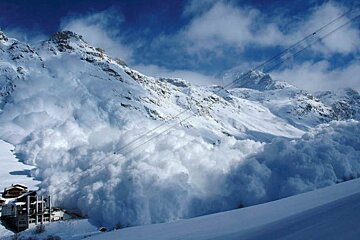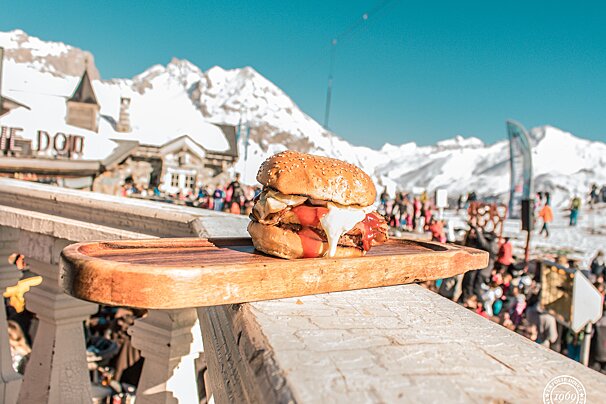

Stay safe this winter
A basic introduction to avalanche safety
Most people who have been out in Val d'Isere or anywhere in the Alps for a few years now will have a healthy respect for the dangers that off piste skiing and snowboarding can pose but even the most seasoned veteran of the powder field can be caught of guard by an avalanche.
If you are new to the mountains or you're thinking of pushing past the marked runs for the first time this year, an introduction to avalanches and avalanche safety is a good idea.
The first thing to know is that whilst you are on open, marked runs you are in no danger of being involved in an avalanche. However as soon as you move off the side of the pisted runs you are in potential avalanche terrain and there are a few things you can do to keep yourself and others safe.
Firstly know what the avalanche risk for the day is. You can find the avalanche hazard warnings at the base of the slopes marked by a coloured flag; yellow, yellow and black and black. Knowing and understanding the avalanche hazard rating for the day is an invaluable clue as to the level of danger that is waiting in the mountains.
You should also have a good idea about the weather conditions and temperature over the last few days in the area you are riding in. How much new snow has come down in the last few days? Is there a weak layer low down in the snowpack? Has there been significant wind loading and on what aspect?
If new snow has come down on an already existing weak layer in the snowpack then conditions may be perfect for an avalanche and a slide may be waiting to happen. If additional snow has been loaded onto a weak layer by the wind then the chances of an avalanche increase again. It's therefore a good idea to know about the weather conditions in the area before you decide where you are going to head that day.
Once you are out on the hill group size and management becomes an important issue in staying safe. It is important to travel in the off piste in a group. Moving around on your own is very dangerous.
An off piste group should be comprised of between three and five members and all the skiers and snowboarders should be of a similar standard. Once out on the hill it is safest to only expose one person to the danger of an avalanche at a time. When traversing, hiking up and riding down spread out in any area where an avalanche is possible to reduce the risk of more than one person at a time being taken in a slide. Stop and regroup at sheltered areas like ridges or directly under rocky outcrops.
Moving like this should reduce the risk of being caught in an avalanche but if the worst comes to the worst and an accident does happen the group will have to carry out a rescue. Although the ski patrol in France are all highly trained they cannot guarantee to be able to reach an accident site in time to save a buried victim before they suffocate under the snow. It is therefore essential that every member of the group has brought a transceiver, shovel and probe and that they know how to use them.
Learning how to use this equipment is not difficult but the time to learn is not when your friend is buried under the snow.
Skiing and snowboarding in powder, hiking into the backcountry and riding on empty slopes far from the ski schools and lift queues is one of the best ways to spend your time in the mountains and nothing feels like floating over a powder field. It is an experience everyone should be able to enjoy but there are dangers in the off piste and knowing about them and how to stay safe is essential if you want to enjoy powder again and again.
For more information about avalanches, search and rescue techniques and avalanche equipment visit out Mountian Safety pages.
Courses on avalanche safety and on-hill training are available throughout the Alps from Henry’s Avalanche Talks, Mountain Tracks and Avalanche Academy.



























